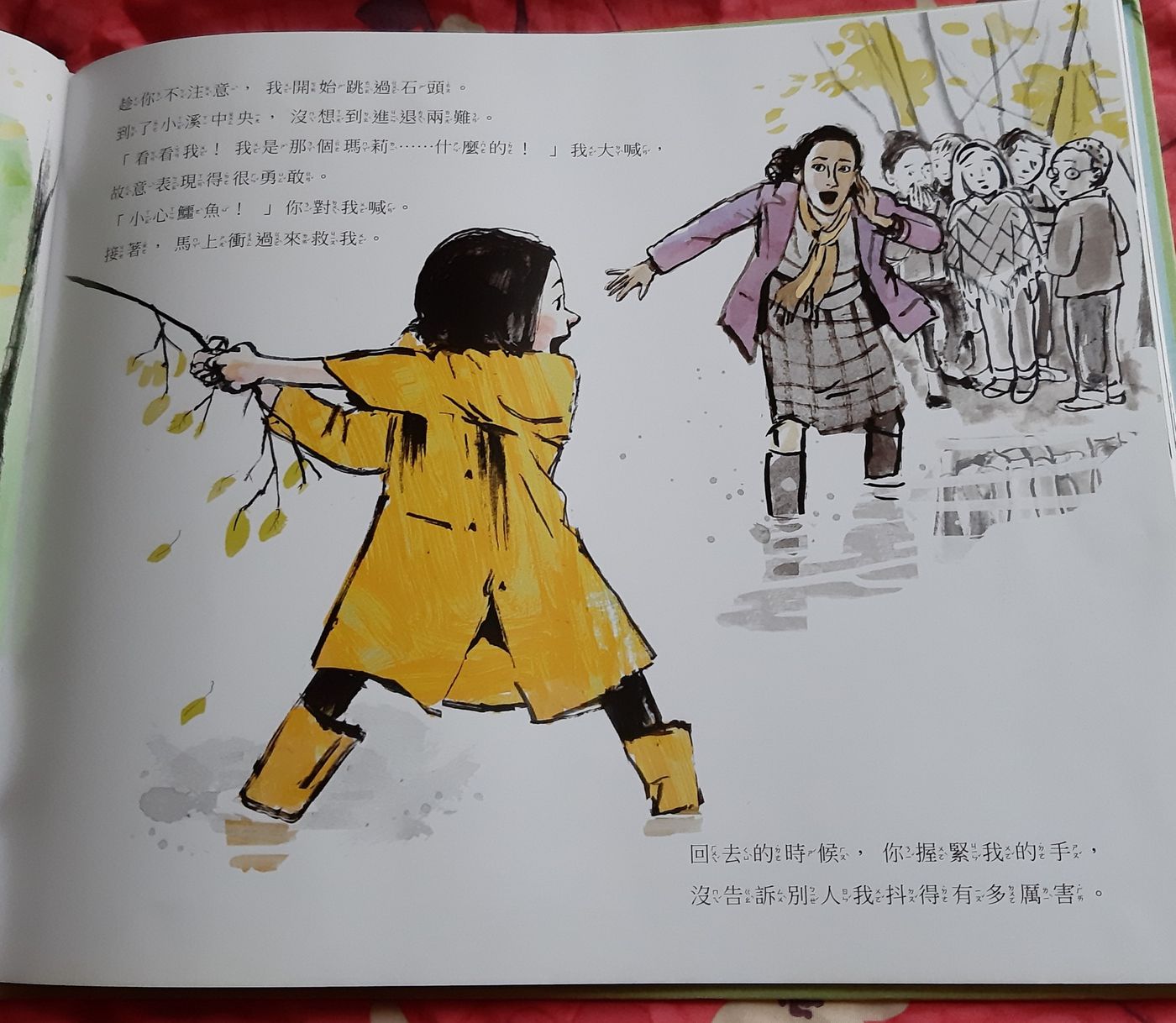"A Letter to a Teacher": What is a real "reception"?

"Whoever welcomes a child like this in my name welcomes me; and whoever welcomes me welcomes not me, but the one who sent me." - Mark 9:37
While reading this picture book, I remembered that when I was taking the subject "Doctrinal Theology (1): God, Revelation, and Creation" in seminary, I wrote this in answering the exam questions:
"The Father, the Son, and the Holy Spirit each have their own uniqueness, but they are three in one. One of the "ones" is expressed in the "mutual space, interpenetration, and interpenetration" of the three: each maintains Its own uniqueness, but each one opens up and reserves space for the other party to enter, also enter the other party, and share with each other.
So...we have to embrace differences and try to accommodate children who are different from the average child or from us. What do we think of the Sunday school kid who doesn't follow directions easily, who likes to move around or interrupt others, and the kid who always sits in a corner during group activities and doesn't fit in well? Because they are not easy to "control", in a culture that advocates "fit", the general tendency is to either marginalize them as invisible, or to constantly try to "tame" them with various disciplines. However, we seldom think of "hosting" them, not only by allowing them to attend Sunday school, or tolerating their behavior, but in turn not attempting to "correct" their behavior to suit us, more than any of these It's hard to do in any way, but what really matches the disposition of our Triune God is to try to enter their world, to understand them, and not only that, but to open ourselves up and accept that we might be changed by them by entering their world. , let their lives enrich ours. In this way, interacting with these children, listening and talking (not explaining and admonishing) is the specific way to "reserve space" and avoid imposing one's own set on the children. This is the real way for children to enter my world, and I can also enter the world of children. "
On the cover of the picture book, a little girl who can't even zip her schoolbag, lowered her head and stepped in a puddle, and a teacher who squatted down in front of the little girl and talked to her, this is a beautiful picture. A teacher who can "squat down" at the same level as the child's eyes is already too rare! And for a child who is not very "obedient" and conforms to the norm, "squatting down", such an adult is even more unique.
There are several beautiful pictures of such teacher-student exchanges in the book, but I think the most beautiful part of this story is not only in these rare pictures, but also in some subtle interactions that cannot be seen in the pictures. These subtle interactions are the moment when the teacher truly "receives" the little girl, when their lives truly communicate: both lives are changed.
These subtle interactions include:
The first day the little girl entered the classroom, the floor was covered with water, but the teacher compared her to an explorer, and the story of this explorer is exactly what the teacher will teach, but before listening to the story of this explorer, She is responsible for fetching the mop.
The little girl stepped on a rock and jumped into the middle of the creek when she went out to investigate, but she was in a dilemma and couldn't get back to the shore. She had to pretend to be brave in front of her classmates. The teacher didn't scold her when she came to rescue, but kept holding her and trembling with fear. , did not let the classmates know that she was actually scared to death.

The little girl took care of the two little mice home because of her negligence and one died. She bought a replacement without the knowledge of the teacher. Later, when cleaning the mouse cage at the school, the teacher said to her, "We can't do any more. Call them mouse brothers, and call them mouse father and mother mouse." And only she and the teacher knew about it.
Since the story is told from the perspective of a little girl, there is no description of the teacher's thoughts, struggles and changes (as if the teacher has always been like this), which is understandable, but we can imagine that the teacher as a living person must have Struggling, especially in the scene where the little girl secretly leaves the team to explore the basement during the visit.

While I like to expound ideas, I prefer stories because stories always present truth in pictures, situations, and feelings, rather than long-winded explanations. This story presents the specific meaning of "reception", and people must receive with feelings.
Like my work? Don't forget to support and clap, let me know that you are with me on the road of creation. Keep this enthusiasm together!

- Author
- More